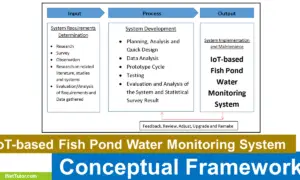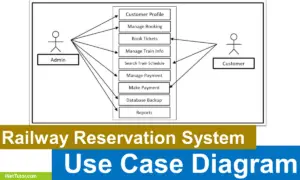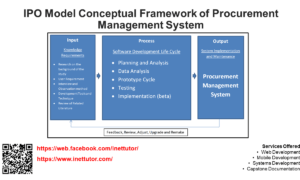Online Food Ordering System ER Diagram
This article will discuss the step by step process on how to prepare the entity relationship diagram or ERD of the project entitled Online Food Ordering System.
The capstone project entitled Online Food Ordering System is a web and mobile based application that allows an organization to post their menus/foods that they offer and accept orders from the customers through this platform. This is somewhat a form of ecommerce platform but specifically intended for food ordering.
The first step in the development of the Online Food Ordering System is to prepare the ER diagram that will serve as the basis later on in the creation of the actual database.
We will create and explain the process of making the entity relationship diagram of Online Food Ordering System.
Let’s start from the symbols used in the ER Diagram.
Entity is represented by the rectangle shape. The entity will be our database table of Online Food Ordering System later on.
Attribute is represented by the oval shape. This will be the columns or fields of each table in the Online Food Ordering System.
Relationship is represented by diamond shape. This will determine the relationships among entities. This is usually in a form of primary key to foreign key connection.
We will follow the 3 basic rules in creating the ER Diagram.
- Identify all the entities.
- Identify the relationship between entities and
- Add meaningful attributes to our entities.
Step 1. In the Online Food Ordering System we have the following entities
- User
- Site Information
- Payment
- Order
- Order Details
- Customer
- Rating
- Menu
- Menu Type
Our design of Online Food Ordering System consists of 9 entities; the specified entities will be our database tables in the design and implementation of Online Food Ordering database schema.
We will now draw the entities of the Online Food Ordering System specified above and it will be represented by a rectangle shape. The image below is the entities identified in the scope of the Online Food Ordering System.
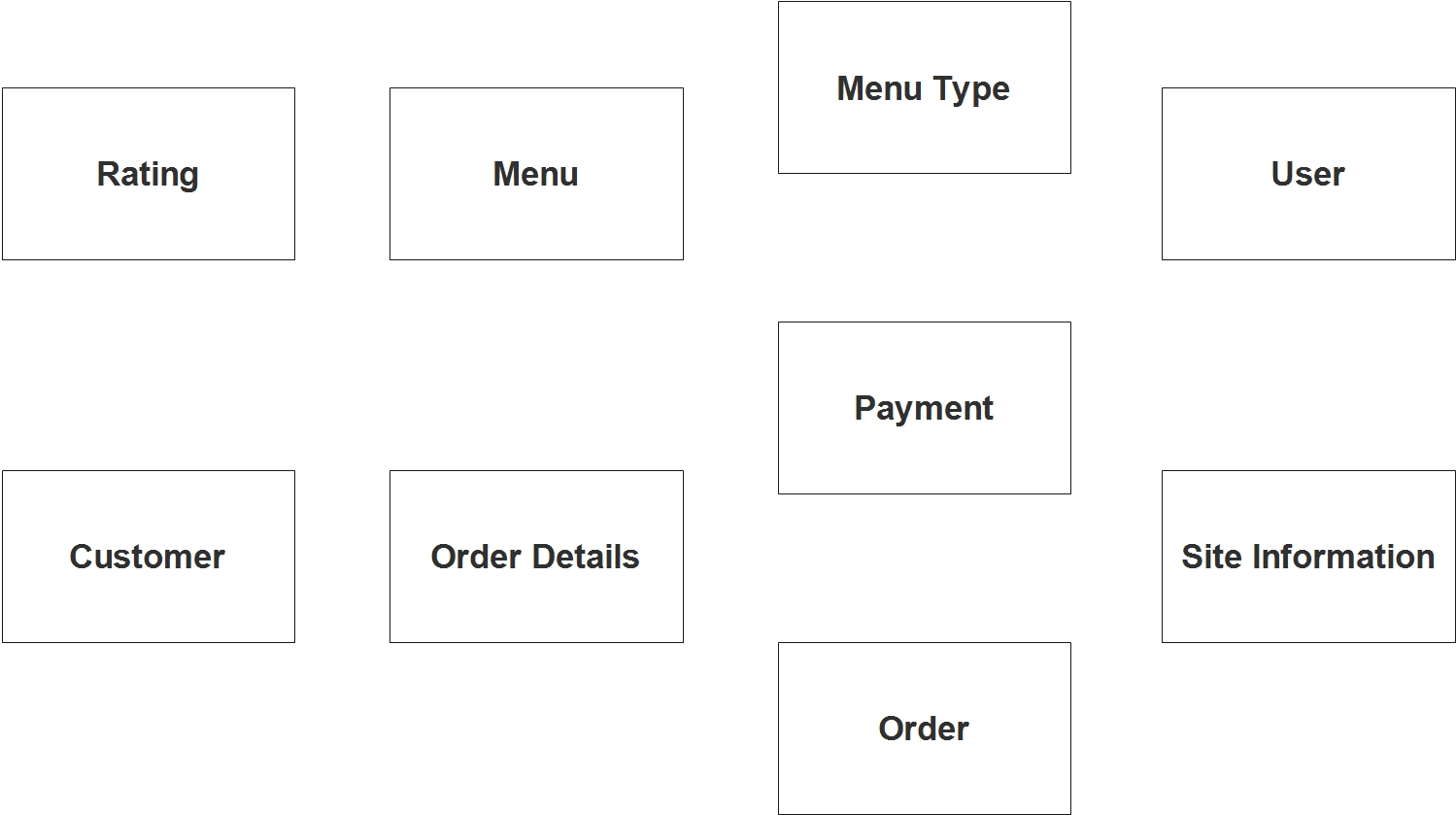
Step 2. After we have specified our entities, it is time now to connect or establish a relationship among the entities.
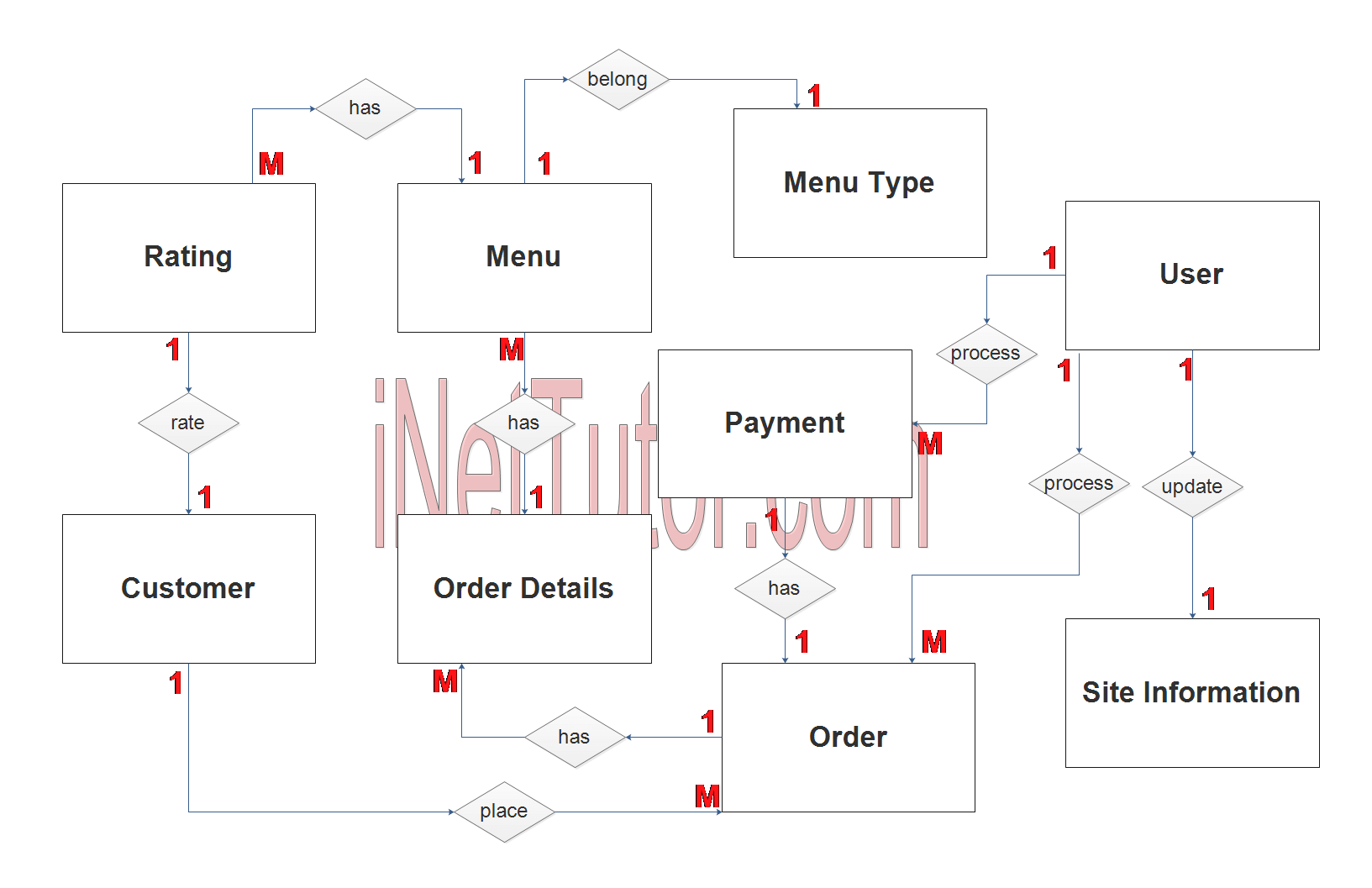
- The users manage/update the site information (1 to 1 relationship).
- The user processes the orders of the customers (1 to many relationship).
- The user processes the payment of the customers (1 to many relationship).
- The customer places their orders (1 to many relationship).
- Order information can contain 1 or more items (1 to many relationship).
- An order detail contains 1 or more menu (1 to many relationship).
- The order information will be linked to the payment module (1 to 1 relationship).
- The customer gives their rating on a menu (1 to 1 relationship).
- A menu has multiple ratings from the customers (1 to many relationship).
- A menu belongs to a specific menu type (1 to 1 relationship).
Step 3. The last part of the ERD process is to add attributes to our entities.
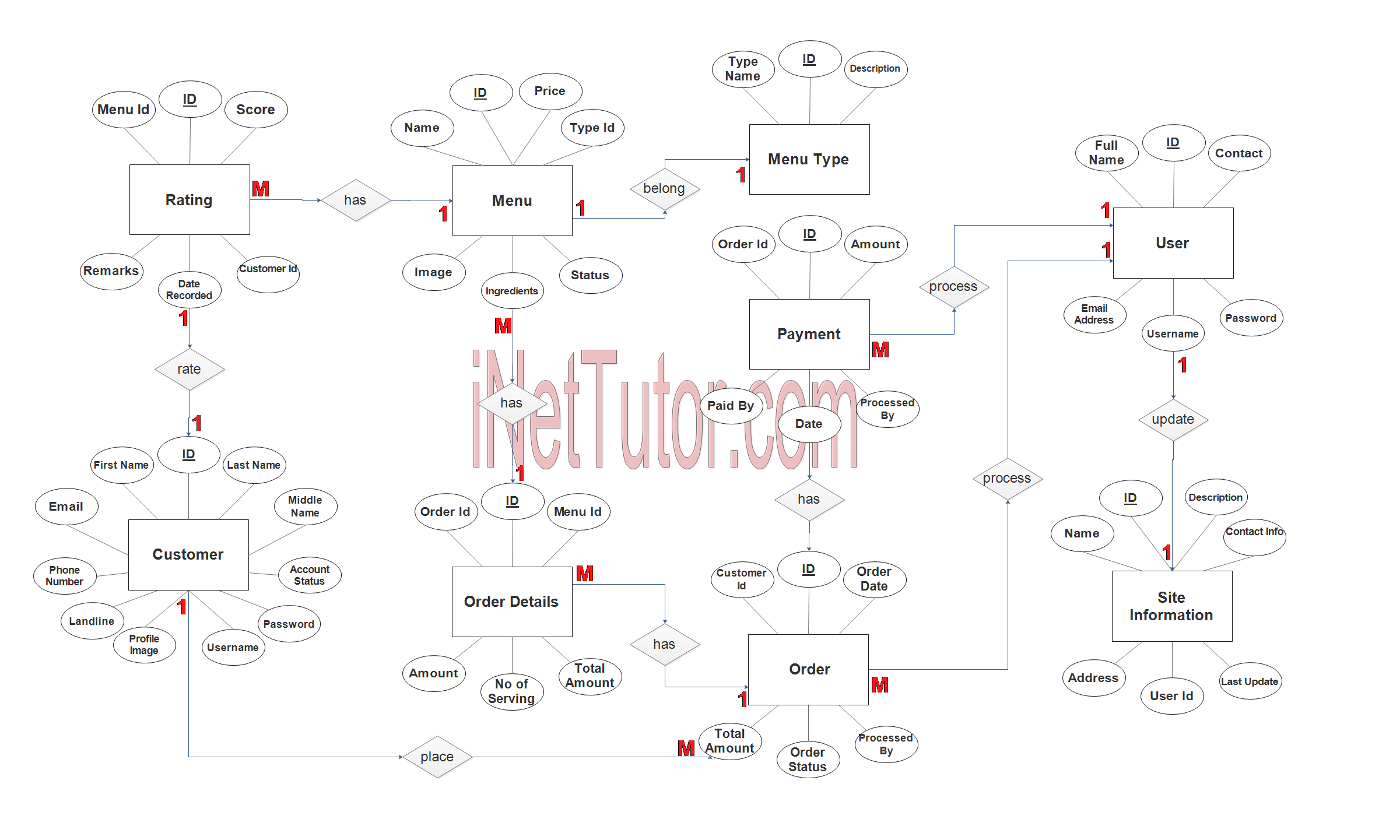
User Entity has the following attributes:
- ID – primary key represented with underline
- Full name
- Contact
- Email address
- Username
- password
Site Information Entity has the following attributes:
- ID – primary key represented with underline
- Name
- Description
- Contact Info
- Address
- User ID – foreign key
- Last Update
Payment Entity has the following attributes:
- ID – primary key represented with underline
- Order ID – foreign key
- Amount
- Paid By
- Date
- Processed By – foreign ey
Order Entity has the following attributes:
- ID – primary key represented with underline
- Customer ID – foreign key
- Order Date
- Total Amount
- Order Status
- Processed By – foreign key
Order Details Entity has the following attributes:
- ID – primary key represented with underline
- Order ID – foreign key
- Menu ID – foreign key
- Amount
- No of Serving
- Total Amount
Customer Entity has the following attributes:
- ID – primary key represented with underline
- First name
- Last name
- Middle name
- Phone Number
- Landline
- Profile Image
- Username
- Password
- Account Status
Rating Entity has the following attributes:
- ID – primary key represented with underline
- Menu ID – foreign key
- Score
- Remarks
- Date Recorded
- Customer ID – foreign key
Menu Entity has the following attributes:
- ID – primary key represented with underline
- Name
- Price
- Type ID – foreign key
- Image
- Ingredients
- Status
Menu Type Entity has the following attributes:
- ID – primary key represented with underline
- Type Name
- Description
Note: all attributes with underline represents the primary key of the entity or table.
The next step is to convert the plan designed on ER Diagram into the actual database, please search for the Online Food Ordering System article which was already posted.
Contact us on our facebook page for the softcopy of the Online Food Ordering System.
You may visit our facebook page for more information, inquiries and comments.
Hire our team to do the project.
